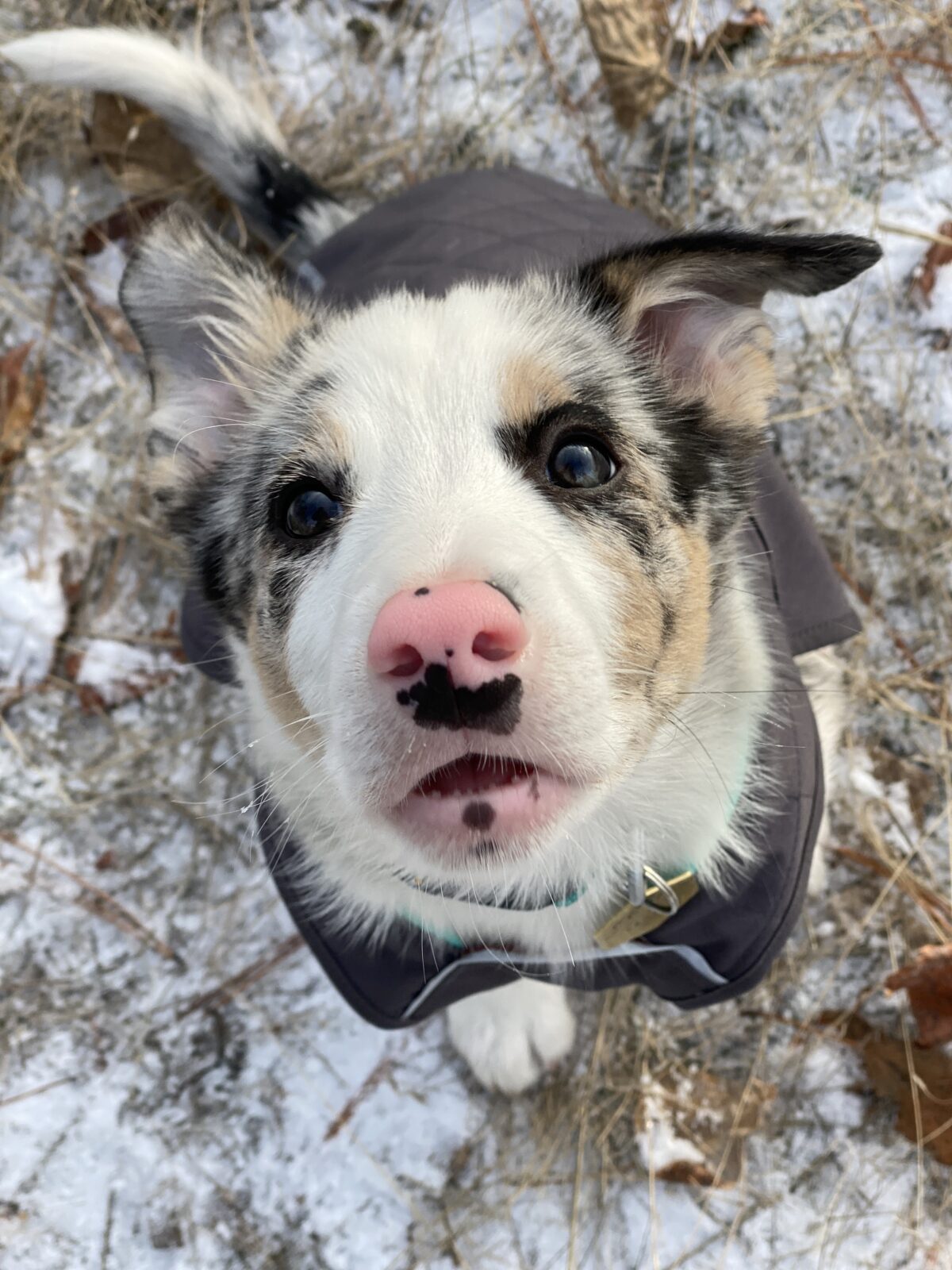If you’ve recently learned what conservation detection dogs are, you may be wondering if your beloved Fluffy has what it takes to help protect the planet.
Can Any Dog Be Trained to do Conservation Detection Work?
Not just any dog can cut it as a conservation detection dog. Conservation detection dogs must be healthy, enthusiastic, and ready to work.
The specific dog will depend a bit on the job at hand, but generally, trainers look for dogs that are high drive, meaning that they’re easily motivated to work using food or toys. This helps keep the dogs motivated on long, hard days “at the office.”
Some research has been done into the selection of conservation detection dogs. But overall, there’s not much published data on how to select a dog for conservation detection work. Even the measures that many organizations use (tests borrowed from Search and Rescue in many cases) result in pretty high flunk-out rates for prospective working dogs.
By some estimates, about 60% of promising dogs don’t make it through training to become a working conservation detection dog.
Successful conservation detection dogs are generally:
- High drive, or easily and very motivated by food or toys.
- Interested in searching and hunting. Some dogs really love food or toys but don’t enjoy searching, and the job is mostly searching and not much playing!
- Physically healthy – this work can be extremely physically demanding. However, some jobs are less intense than others.
- Relatively emotionally stable. While some dogs that are terrified of men or aggressive towards other dogs can succeed in this line of work, it may limit the jobs the dogs can take.
- Paired with a great handler and trainer! The reality is, many dogs have what it takes to at least start training as conservation detection dogs. While it takes a very special dog to be ready to work at this job full-time (think 3-6 hours of continuous, focused searching several days per week), many dogs will enjoy the basics of detection dog training. It doesn’t hurt to try it out and see if you and your dog enjoy the work!
Almost any dog can be trained to sniff out a target odor in exchange for a reward. This is an innate skill for all dogs, and most really enjoy the challenge! Just throw a piece of chicken into some medium-long grass and see what I mean.
The trick with finding the right conservation detection dog is finding a dog who is SO motivated by toys or food that they will continue working even when they’re hot, tired, and even frustrated or bored. They’ll ignore birds and squirrels and solve complicated scent puzzles by following odor trails over the river, through the woods, and up mountains.
While all dogs can learn to sniff out a bit of chicken, it takes a special dog to truly enjoy this job enough to do it professionally. While on deployment, we often work for 4+ hours per day, 4 days per week. Most dogs simply don’t have the work ethic, motivation, physical stamina, and mental focus to keep up with that demand.
As I am training my young puppy to be a conservation detection dog, I’m taking care to ensure that he learns to LOVE his toys and treats, enjoy working for them, have fun with scent games, and feel comfortable in the world.
There’s no one-size-fits-all training approach. I hope that the combination of careful selection (I picked Niffler out from a breeder who worked with me to test all the puppies on their problem-solving skill and enthusiasm for work), good genetics, and lots and lots of training will help Niffler and I succeed.
With my main working K9 Barley, I just got lucky. I didn’t know we were going to be a K9 Conservationist team when I adopted him, but he’s got the perfect personality for the job! Maybe Fluffy does, too.
 Donate
Donate

